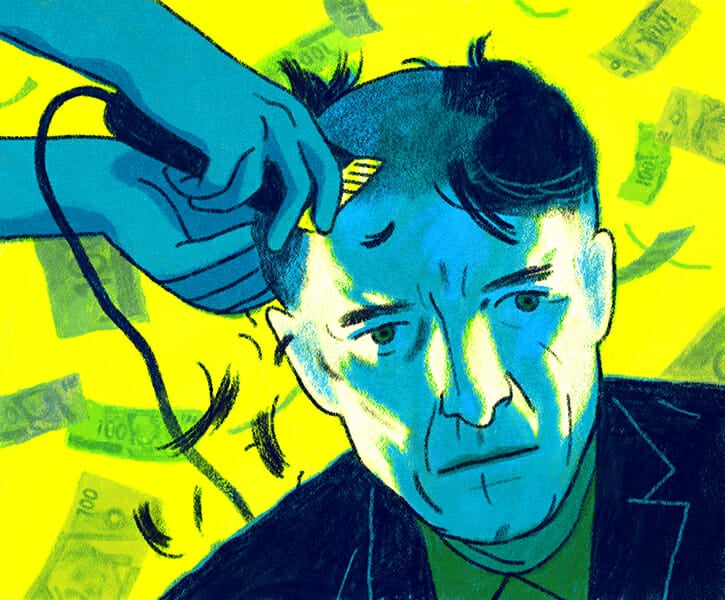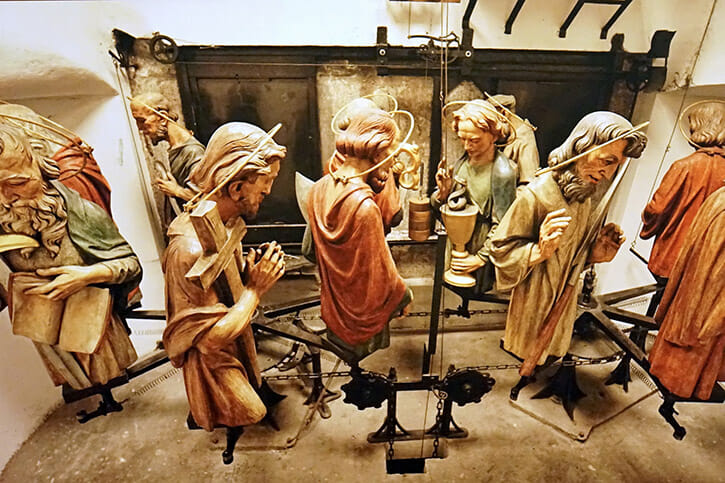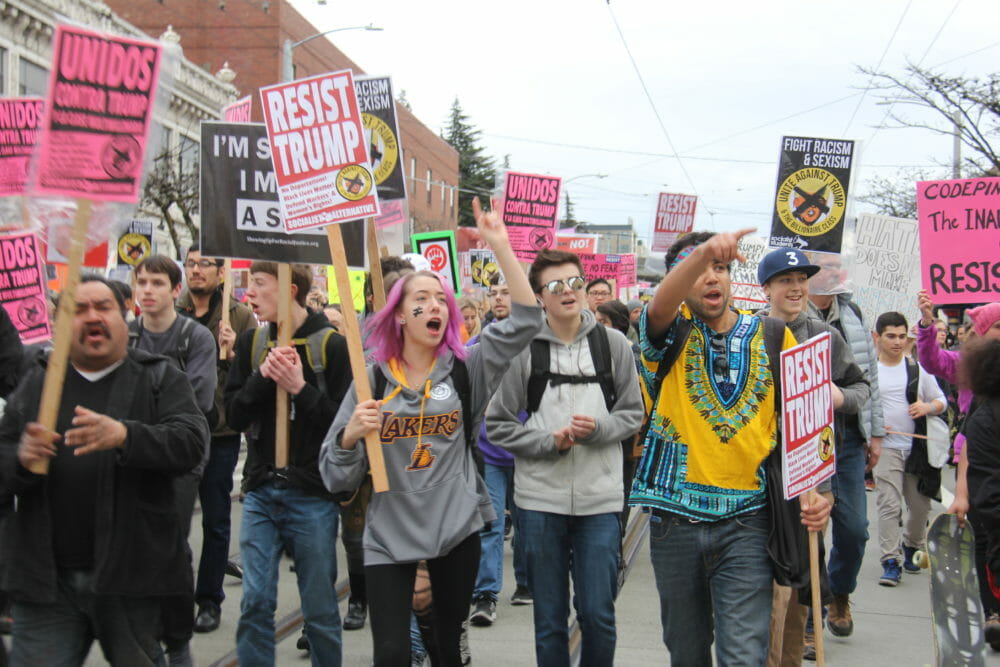 By GERALD SATO
By GERALD SATO
When you like something, it’s natural to learn as much as you can about it. Readers who admire “No-No Boy” by John Okada (1957) will therefore embrace the new anthology “John Okada: The Life & Rediscovered Work of the Author of No-No Boy,” edited by Frank Abe, Greg Robinson and Floyd Cheung (University of Washington, Seattle, 2018).
“No-No Boy” is often described as the definitive “Nisei Novel” and the “Great Japanese American Novel.” This new anthology makes the case for what Okada’s fans have known all along, that “No-No Boy” is one of the greatest American novels of the 20th century.
Its protagonist, Ichiro Yamada, returns home to Seattle after war’s end from a federal prison where has had been incarcerated for draft evasion. He is broken and he sees physically and emotionally broken people around him, the Japanese Americans who have spent the war years in concentration camps and military service.
He is full of rage and pain, struggles to understand and make his way in post-war America. His suffering has left him unable to accept the consolations of what would at one time may have been an ordinary life: he rejects opportunities for gainful employment and for lasting relationships that could have been fulfilling.
 His restlessness is unending. There are some glimmers of how he might find his way through the darkness into the light, but there is no march of triumph as the novel ends. And the reader who makes this journey with Ichiro will see his or her own perilous journey towards becoming a complete integrated self in the face of a world hostile to achieving such a goal.
His restlessness is unending. There are some glimmers of how he might find his way through the darkness into the light, but there is no march of triumph as the novel ends. And the reader who makes this journey with Ichiro will see his or her own perilous journey towards becoming a complete integrated self in the face of a world hostile to achieving such a goal.
The best piece is the biographical essay by Frank Abe, “An Urgency to Write.” The episodes recounted from Okada’s life, the recollections of his family and acquaintance very much create the picture of someone passionate from an early age about literary creation and finding a unique voice and vision of the world. His history confirms for me how literary his outlook really was, even when forced to make his living at non-literary jobs and to devote his time to being a good husband, father, co-worker.
How tantalizing to consider what it must have been like for someone with his sensibilities to be living in New York when he did; some of the best American writing was going on there at the time. And how important it was for him to be able to leave that behind, to live in the “normalcy” of Detroit to be able to construct much of his book.
That his outlook was so literary tends to confirm my view that nothing in his novel was placed there by chance or without being intended to further a specific literary strategy. He knew exactly how Japanese American readers respond to the phrases “No-No” and “No-No Boy.” There are events in Okada’s life story that are reflected in the structure of “No-No Boy,” a circular tour, beginning and ending in Seattle (just as his time in relocation and federal prison is itself a circular tour) before gaining a glance of what he will do with the rest of his life.
A lot of people die in the 220 pages of “No-No Boy”; there are a lot of “no’s” in the story. Each death, even the death of people he admires, he recognizes as a path that he can’t follow. There are no easy or complete resolutions or reconciliations.
But Ichiro recognizes that merely leaving a concentration camp or a federal prison does not make you free, that you have to make decisions about your life and execute them if you truly hope to get past the barbed-wire fences and jail bars of the soul and mind.
Of the other pieces in the anthology, I like Stephen Sumida’s the best. His thoughts about “No-No Boy” come from his close reading and analysis of the actual text of the novel; he is not looking at it the through the lenses of any particular theory or approach to literary criticism or history.
Jeffrey Yamashita’s article reviews critics who have done just that, all the “schools” of thought on literature created by ethnic and historically oppressed minorities — interesting, but making me think I made the right decision for myself not to accept the offer of a graduate school fellowship and admission to a Ph.D. program I received when I was a senior in college.
The anthology includes previously unknown and unpublished short works by Okada, sure to satisfy the hunger of readers who wish desperately that he had been able to complete a second novel before his death at the age of 47.
I have been reading and re-reading all the pieces in this anthology. And as good literary criticism always makes a reader want to return to the subject of the analysis, I’ve gone back and re-read many passages of “No-No Boy.” I envy those who may be inspired by Abe’s anthology to read Okada’s “No-No Boy” for the very first time.
—–
Gerald Masahiro Sato has been an attorney for more than 40 years, the last 20 with the Office of the City Attorney of Los Angeles. He worked with National Coalition for Redress/Reparations in winning redress and successfully represented Japanese American individuals whose claims for redress under the Civil Liberties Act of 1988 had been rejected by the U.S. Department of Justice. He can be reached at [email protected].
A book event for “John Okada: The Life and Rediscovered Work of the Author of No-No Boy” will be held on Saturday, Feb. 2, from 2 to 4 p.m. at the Japanese American National Museum, 100 N. Central Ave., Little Tokyo. Discussion with co-editors Frank Abe and Greg Robinson, moderated by Brian Niiya of Densho, will be followed by a book-signing. The book is available at the JANM Store (https://janmstore.com/products/john-okada). Free but RSVPs recommended. Info: (213) 625-0414, www.janm.org
 ‘Hiroshima Boy’ Gets Edgar Nomination
‘Hiroshima Boy’ Gets Edgar Nomination
 No Left Turns
No Left Turns
 Shave the Billionaire
Shave the Billionaire
 YouTube bans certain types of gambling content
YouTube bans certain types of gambling content
 HBO’s New Japanese Crime Drama Worthy of Its Title
HBO’s New Japanese Crime Drama Worthy of Its Title
 Wordle today: The answer and hints for March 10, 2025
Wordle today: The answer and hints for March 10, 2025
 Amnesiac Nation
Amnesiac Nation
 NYT Connections Sports Edition hints and answers for March 9: Tips to solve Connections #167
NYT Connections Sports Edition hints and answers for March 9: Tips to solve Connections #167
 OAA Holiday Boutique
OAA Holiday Boutique
 Lego free Steering Wheel: How to get free Lego
Lego free Steering Wheel: How to get free Lego
 The Beauty in Community Theatre
The Beauty in Community Theatre
 Lives Are on the Line
Lives Are on the Line
 Fidelity, Bravery, Integrity, Memos
Fidelity, Bravery, Integrity, Memos
 What Comes After Resistance?
What Comes After Resistance?
 Movie Academy Invites Record 928 for Diversified Membership
Movie Academy Invites Record 928 for Diversified Membership
 Best Ninja deal: Get the Woodfire 8
Best Ninja deal: Get the Woodfire 8
 Conspiracies, War, and Democrats
Conspiracies, War, and Democrats
 NYT Connections Sports Edition hints and answers for March 9: Tips to solve Connections #167
NYT Connections Sports Edition hints and answers for March 9: Tips to solve Connections #167
 JACCC to Present ‘Sunset on the Plaza’
JACCC to Present ‘Sunset on the Plaza’
 Stuff Your Kindle Day: How to get free indie horror books on March 7
Stuff Your Kindle Day: How to get free indie horror books on March 7
CES 2025: Samsung's The Frame Pro TV exists now, and old Frame TVs are on saleGarmin smartwatch deals: Save up to 40% on the Venu 3, Vivoactive 5, Lily 2, and moreTikTok trends have created massive IRL lines. Don't fall for the hype.Best free online courses from Stanford UniversityArsenal vs. Newcastle United 2025 livestream: Watch Carabao Cup for freeCES 2025 How to buy Dell Pro laptopsHow to unblock XVideos for freeBest Amazon deal: Save $35 on a 10Phoenix Suns vs. Charlotte Hornets 2025 livestream: Watch NBA onlineBest Walmart deal: The Shark Pet Pro is just $144 at Walmart. Nintendo Game & Watch: Super Mario Bros review: Handheld history DHS cybersecurity director subtweets Trump after being fired via tweet Get a sneek peek at the snazzy cover and excerpt for this Mashable writer's debut novel Apple's iPhone 12 studio lets you mix and match iPhone colors and accessories The new MacBook Air and MacBook Pro are powered by Apple's own M1 chip Twitter 'exploring' adding a dislike button or downvote system Apple SVP Craig Federighi is a mood and also a ‘daddy’ Apple's HomePod Mini is great, I just wish it had Google Assistant Elon Musk may have COVID Why you shouldn’t buy Apple’s new MagSafe Duo charger
0.1851s , 12152.7890625 kb
Copyright © 2025 Powered by 【taboo sex video movies】BOOK REVIEW: Insightful Analysis of the ‘Great JA Novel’,Feature Flash